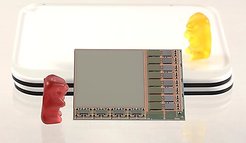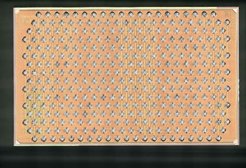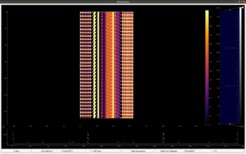News
First prototypes of DMC 65 Integrated cuircit (IC) operational
29.11.2022

The EDET-DH80K camera system is a Direct Hit Electron Detector to be operated in the focal plane of a TEM. It is a one Megapixel camera system consisting of four independent quadrant modules with 256k pixels each, designed to operate at a framerate of 80k frames per second. Framerates even higher than that are possible by using advanced windowing techniques. The final system is capable of recording image bursts of 50 full frame images with the specified time resolution of 12.8 microseconds, with burst repetition rate of 100 Hz.
The system’s detector matrix is based on the combined DEPFET detector/amplifier cell. In addition to the unprecedented operation speed, the system features high radiation hardness, nonlinear amplification applying in-pixel signal compression and thinned detector substrate for optimum PSF. For maximum integration density inside the TEM column, the complete front end electronics is integrated together with the detector matrix on an All-Silicon Module (ASM).

A vital component of this system is the DMC 65 IC. Being a part of the front end electronics package, this device, a combined sequencer / data buffer IC is used as fast digital data handler IC for the modules and enables the system to operate with the specified time resolution. It consists of an integrated sequencer providing the control signals for the detector matrix, interface circuitry to the DCD digitizer chip used to acquire and digitize the analog data from the DEPFET matrix, and FIFO circuitry for capturing and buffering the DCD output data, which is then transferred to the periphery using the serial high-speed AURORA protocol. Each DCD is paired with one DCD chip, so the fully populated module will be furnished with 8 DCD/DMC 65 couples.



